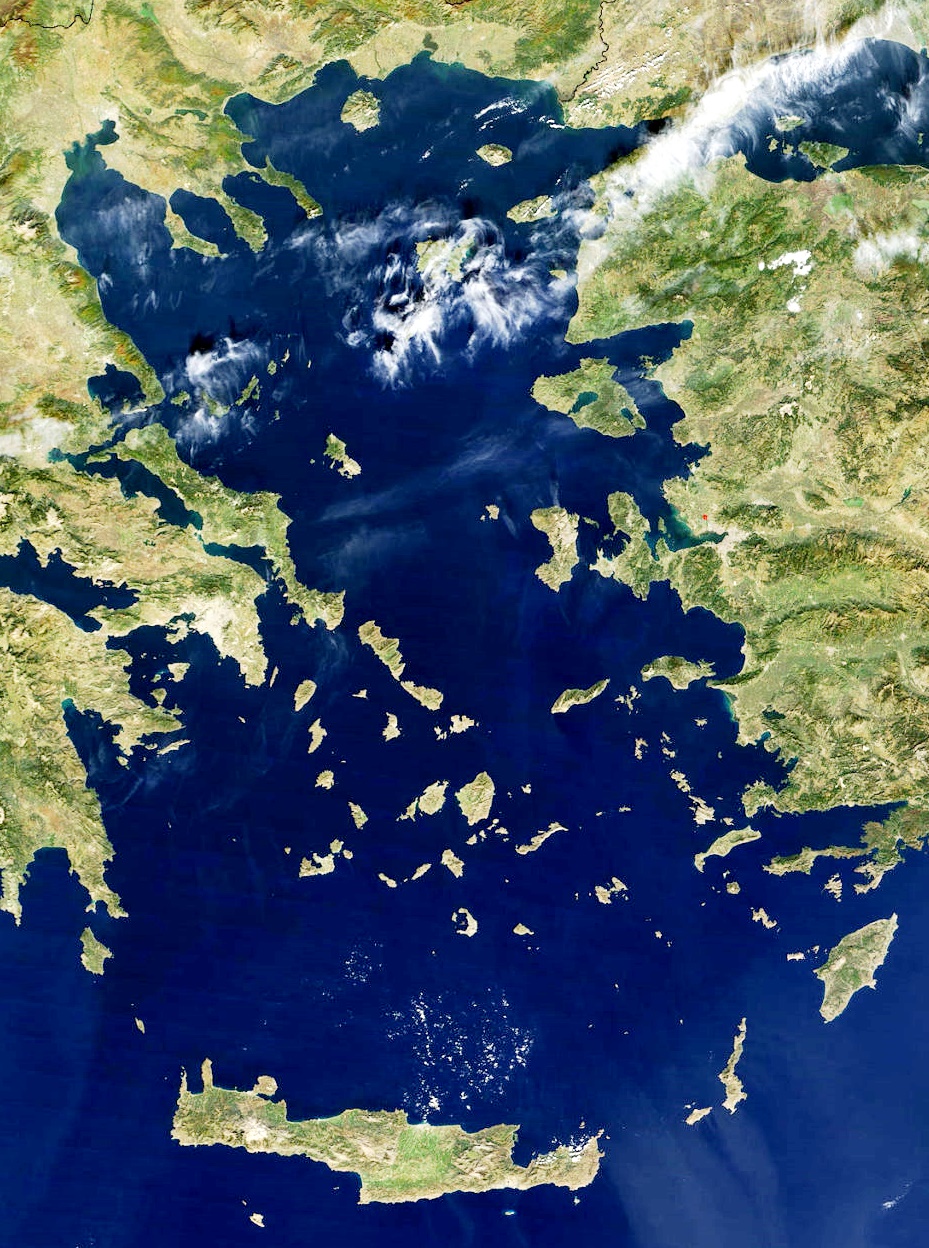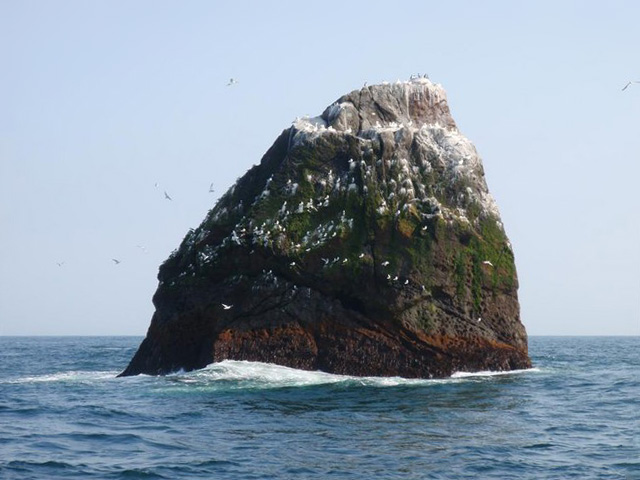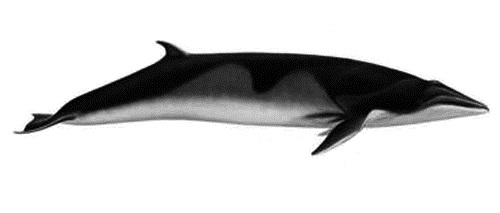|
Ringgold Isles
The Ringgold Isles are an archipelago in Fiji, forming an outlier group to Vanua Levu. The Budd, Nukusemanu, and Heemskercq Reefs form part of the group. The group is mostly uninhabited, but Qelelevu has a small village. In 2008 Pacific rats were eradicated from seven islands of the group in an endeavour facilitated by BirdLife International's Fiji Programme. A area covering the archipelago is the Ringgold Islands Important Bird Area. This area supports globally and regionally significant populations of marine turtles, humpback whales, seabirds and semi-nomadic reef fish, and may hold concentrations of cold-water corals. Cakau Matacucu Cobia Cobia is an island in Fiji, and is a member of the Ringgold Isles archipelago, which forms an outlier group to the northern island of Vanua Levu. It has a land area of . Lailai Maqewa Maqewa Island is narrow and rocky. It is located at and has a total land area of . Mota Levu Nanuku Levu Nukubalati and Nukubasaga N ... [...More Info...] [...Related Items...] OR: [Wikipedia] [Google] [Baidu] |
Archipelago
An archipelago ( ), sometimes called an island group or island chain, is a chain, cluster, or collection of islands. An archipelago may be in an ocean, a sea, or a smaller body of water. Example archipelagos include the Aegean Islands (the origin of the term), the Canadian Arctic Archipelago, the Stockholm Archipelago, the Malay Archipelago (which includes the Indonesian and Philippine Archipelagos), the Lucayan (Bahamian) Archipelago, the Japanese archipelago, and the Hawaiian Archipelago. Etymology The word ''archipelago'' is derived from the Italian ''arcipelago'', used as a proper name for the Aegean Sea, itself perhaps a deformation of the Greek Αιγαίον Πέλαγος. Later, usage shifted to refer to the Aegean Islands (since the sea has a large number of islands). The erudite paretymology, deriving the word from Ancient Greek ἄρχι-(''arkhi-'', "chief") and πέλαγος (''pélagos'', "sea"), proposed by Buondelmonti, can still be found. Geograph ... [...More Info...] [...Related Items...] OR: [Wikipedia] [Google] [Baidu] |
Seabird
Seabirds (also known as marine birds) are birds that are adaptation, adapted to life within the marine ecosystem, marine environment. While seabirds vary greatly in lifestyle, behaviour and physiology, they often exhibit striking convergent evolution, as the same environmental problems and feeding ecological niche, niches have resulted in similar adaptations. The first seabirds evolved in the Cretaceous geological period, period, while modern seabird families emerged in the Paleogene. Seabirds generally live longer, Reproduction, breed later and have fewer young than other birds, but they invest a great deal of time in their young. Most species nest in Bird colony, colonies, varying in size from a few dozen birds to millions. Many species are famous for undertaking long annual bird migration, migrations, crossing the equator or circumnavigating the Earth in some cases. They feed both at the ocean's surface and below it, and even on each other. Seabirds can be highly pelagic, ... [...More Info...] [...Related Items...] OR: [Wikipedia] [Google] [Baidu] |
Island Restoration
The ecological restoration of islands, or island restoration, is the application of the principles of ecological restoration to islands and island groups. Islands, due to their isolation, are home to many of the world's endemic (ecology), endemic species, as well as important breeding grounds for seabirds and some marine mammals. Their ecosystems are also very vulnerable to human disturbance (ecology), disturbance and particularly to introduced species, due to their small size. Island groups, such as New Zealand and Hawaii, have undergone substantial extinctions and losses of Habitat (ecology), habitat. Since the 1950s several organisations and government agencies around the world have worked to restore islands to their original states; New Zealand has used them to hold natural populations of species that would otherwise be unable to survive in the wild. The principal components of island restoration are the removal of introduced species and the reintroduction of native species. I ... [...More Info...] [...Related Items...] OR: [Wikipedia] [Google] [Baidu] |
Archipelagoes Of Fiji
An archipelago ( ), sometimes called an island group or island chain, is a chain, cluster, or collection of islands. An archipelago may be in an ocean, a sea, or a smaller body of water. Example archipelagos include the Aegean Islands (the origin of the term), the Canadian Arctic Archipelago, the Stockholm Archipelago, the Malay Archipelago (which includes the Indonesian and Philippine Archipelagos), the Lucayan (Bahamian) Archipelago, the Japanese archipelago, and the Hawaiian Archipelago. Etymology The word ''archipelago'' is derived from the Italian ''arcipelago'', used as a proper name for the Aegean Sea, itself perhaps a deformation of the Greek Αιγαίον Πέλαγος. Later, usage shifted to refer to the Aegean Islands (since the sea has a large number of islands). The erudite paretymology, deriving the word from Ancient Greek ἄρχι-(''arkhi-'', "chief") and πέλαγος (''pélagos'', "sea"), proposed by Buondelmonti, can still be found. Geographic typ ... [...More Info...] [...Related Items...] OR: [Wikipedia] [Google] [Baidu] |
Ringgold Isles
The Ringgold Isles are an archipelago in Fiji, forming an outlier group to Vanua Levu. The Budd, Nukusemanu, and Heemskercq Reefs form part of the group. The group is mostly uninhabited, but Qelelevu has a small village. In 2008 Pacific rats were eradicated from seven islands of the group in an endeavour facilitated by BirdLife International's Fiji Programme. A area covering the archipelago is the Ringgold Islands Important Bird Area. This area supports globally and regionally significant populations of marine turtles, humpback whales, seabirds and semi-nomadic reef fish, and may hold concentrations of cold-water corals. Cakau Matacucu Cobia Cobia is an island in Fiji, and is a member of the Ringgold Isles archipelago, which forms an outlier group to the northern island of Vanua Levu. It has a land area of . Lailai Maqewa Maqewa Island is narrow and rocky. It is located at and has a total land area of . Mota Levu Nanuku Levu Nukubalati and Nukubasaga N ... [...More Info...] [...Related Items...] OR: [Wikipedia] [Google] [Baidu] |
Atoll
An atoll () is a ring-shaped island, including a coral rim that encircles a lagoon. There may be coral islands or cays on the rim. Atolls are located in warm tropical or subtropical parts of the oceans and seas where corals can develop. Most of the approximately 440 atolls in the world are in the Pacific Ocean. Two different, well-cited models, the subsidence model and the antecedent karst model, have been used to explain the development of atolls.Droxler, A.W. and Jorry, S.J., 2021. "The Origin of Modern Atolls: Challenging Darwin's Deeply Ingrained Theory". ''Annual Review of Marine Science'', 13, pp. 537–573. According to Charles Darwin's subsidence model, the formation of an atoll is explained by the sinking of a volcanic island around which a coral fringing reef has formed. Over geologic time, the volcanic island becomes extinct and eroded as it subsides completely beneath the surface of the ocean. As the volcanic island subsides, the coral fringing reef becomes a ba ... [...More Info...] [...Related Items...] OR: [Wikipedia] [Google] [Baidu] |
Islet
An islet ( ) is generally a small island. Definitions vary, and are not precise, but some suggest that an islet is a very small, often unnamed, island with little or no vegetation to support human habitation. It may be made of rock, sand and/or hard coral; may be permanent or tidal (i.e. surfaced reef or seamount); and may exist in the sea, lakes, rivers or any other sizeable bodies of water. Definition As suggested by its origin ''islette'', an Old French diminutive of "isle", use of the term implies small size, but little attention is given to drawing an upper limit on its applicability. The World Landforms website says, "An islet landform is generally considered to be a rock or small island that has little vegetation and cannot sustain human habitation", and further that size may vary from a few square feet to several square miles, with no specific rule pertaining to size. Other terms * Ait (/eɪt/, like eight) or eyot (/aɪ(ə)t, eɪt/), a small island. It is espe ... [...More Info...] [...Related Items...] OR: [Wikipedia] [Google] [Baidu] |
Coral
Corals are colonial marine invertebrates within the subphylum Anthozoa of the phylum Cnidaria. They typically form compact Colony (biology), colonies of many identical individual polyp (zoology), polyps. Coral species include the important Coral reef, reef builders that inhabit tropical oceans and secrete calcium carbonate to form a hard skeleton. A coral "group" is a colony of very many cloning, genetically identical polyps. Each polyp is a sac-like animal typically only a few millimeters in diameter and a few centimeters in height. A set of tentacles surround a central mouth opening. Each polyp excretes an exoskeleton near the base. Over many generations, the colony thus creates a skeleton characteristic of the species which can measure up to several meters in size. Individual colonies grow by asexual reproduction of polyps. Corals also breed sexually by spawning: polyps of the same species release gametes simultaneously overnight, often around a full moon. Fertilized eggs form ... [...More Info...] [...Related Items...] OR: [Wikipedia] [Google] [Baidu] |
ISS006-E-7483 - View Of Fiji
The International Space Station (ISS) is a large space station that was Assembly of the International Space Station, assembled and is maintained in low Earth orbit by a collaboration of five space agencies and their contractors: NASA (United States), Roscosmos (Russia), European Space Agency, ESA (Europe), JAXA (Japan), and Canadian Space Agency, CSA (Canada). As the largest space station ever constructed, it primarily serves as a platform for conducting scientific experiments in microgravity and studying the space environment. The station is divided into two main sections: the Russian Orbital Segment (ROS), developed by Roscosmos, and the US Orbital Segment (USOS), built by NASA, ESA, JAXA, and CSA. A striking feature of the ISS is the Integrated Truss Structure, which connect the station’s vast system of solar panels and Spacecraft thermal control, radiators to its pressurized modules. These modules support diverse functions, including scientific research, crew habitation, ... [...More Info...] [...Related Items...] OR: [Wikipedia] [Google] [Baidu] |
Deep-water Coral
The habitat of deep-water corals, also known as cold-water corals, extends to deeper, darker parts of the oceans than tropical corals, ranging from near the surface to the abyss, beyond where water temperatures may be as cold as . Deep-water corals belong to the Phylum Cnidaria and are most often stony corals, but also include black and thorny corals and soft corals including the Gorgonians (sea fans). Like tropical corals, they provide habitat to other species, but deep-water corals do not require zooxanthellae Zooxanthellae (; zooxanthella) is a colloquial term for single-celled photosynthetic organisms that are able to live in symbiosis with diverse marine invertebrates including corals, jellyfish, demosponges, and nudibranchs. Most known zooxanthell ... to survive. While there are nearly as many species of deep-water corals as shallow-water species, only a few deep-water species develop traditional reefs. Instead, they form aggregations called patches, banks, bioher ... [...More Info...] [...Related Items...] OR: [Wikipedia] [Google] [Baidu] |
Reef Fish
Coral reef fish are fish which live amongst or in close relation to coral reefs. Coral reefs form complex ecosystems with tremendous biodiversity. Among the myriad inhabitants, the fish stand out as colourful and interesting to watch. Hundreds of species can exist in a small area of a healthy reef, many of them hidden or well camouflaged. Reef fish have developed many ingenious specialisations adapted to survival on the reefs. Coral reefs occupy less than 1% of the surface area of the world oceans, but provide a home for 25% of all marine fish species. Reef habitats are a sharp contrast to the open water habitats that make up the other 99% of the world oceans. However, loss and degradation of coral reef habitat, increasing pollution, and overfishing including the use of destructive fishing practices, are threatening the survival of the coral reefs and the associated reef fish. Overview Coral reefs are the result of millions of years of coevolution among algae, invertebra ... [...More Info...] [...Related Items...] OR: [Wikipedia] [Google] [Baidu] |
Humpback Whale
The humpback whale (''Megaptera novaeangliae'') is a species of baleen whale. It is a rorqual (a member of the family Balaenopteridae) and is the monotypic taxon, only species in the genus ''Megaptera''. Adults range in length from and weigh up to . The humpback has a distinctive body shape, with long pectoral fins and tubercles on its head. It is known for Cetacean surfacing behaviour, breaching and other distinctive surface behaviors, making it popular with whale watching, whale watchers. Males produce a complex Whale sound, song that typically lasts from 4 to 33 minutes. Found in oceans and list of seas, seas around the world, humpback whales typically animal migration, migrate between feeding areas towards the poles and breeding areas near the equator. They feed in Polar region, polar waters and migrate to tropics, tropical or subtropical waters to breed and give birth. Their diet consists mostly of krill and small fish, and they usually Bubble-net feeding, use bubbles to c ... [...More Info...] [...Related Items...] OR: [Wikipedia] [Google] [Baidu] |









